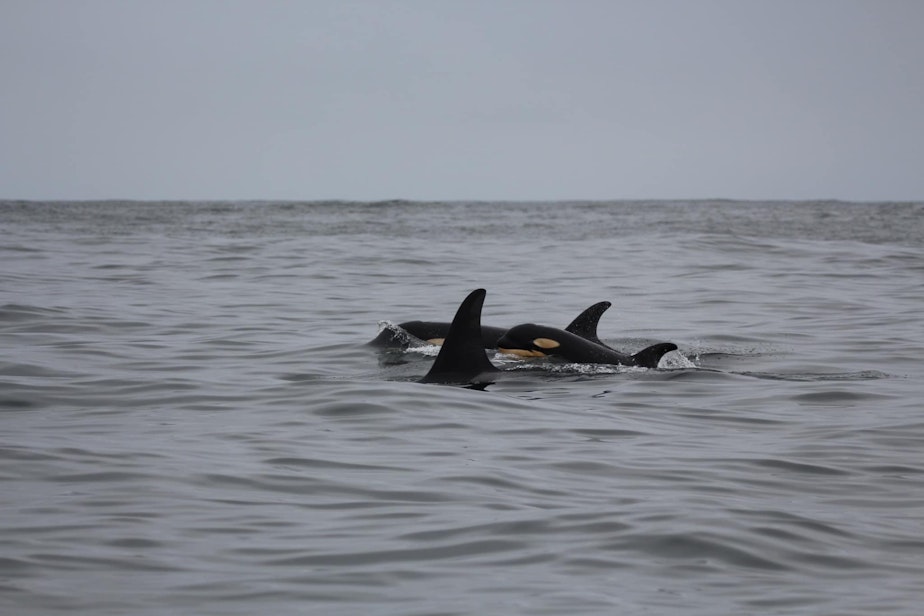2 rambunctious youngsters, no dying elders might spell hope for NW orcas

Whale researchers say the Northwest’s endangered orcas have apparently had a very good year.
The southern resident killer whale population appears to have grown by two, from 73 to 75 individuals.
Results of the Center for Whale Research’s annual orca census aren’t final, but researchers say it looks like the whales had two births and no deaths over the past 12 months.
“It is rare,” Michael Weiss, the center’s research director. “We expect to lose one or two whales, at least, each year, and some years we lose as many as five, six, seven whales. So potentially having a year where we haven't lost anyone is really, really nice.”
The whale census depends on whales showing up and being photographed above the surface — a task that can take persistence, long lenses, and smooth seas. Weiss said all but one of the endangered orcas have been photographed recently.
“There's no one we currently think is missing,” Weiss said. “That being said, we haven't had enough days on the water with all of these groups to be totally sure.”
Sponsored
RELATED: Eavesdropping on orcas: love, grief, and family
Young orcas often die before their first birthday, but researchers say the newest members of the orcas’ L Pod, one male and one female, appeared healthy in July.
“When we saw them last, they were absolutely thriving, just really energetic and rambunctious,” said Deborah Giles, science and research director at the nonprofit Wild Orca.
Giles described the youngsters playing and roughhousing with their families off the west side of San Juan Island on July 4.
“A lot of social interaction with the family, being lifted and carried and thrown sometimes by the family, rolling over on their family members, in an attempt to get lifted,” Giles said. “It's very precious to get to see that, those playful interactions.”
Sponsored
While she expressed excitement about the two young orcas, Giles says a population this size should be having six babies a year.
“We just haven't seen that for a very, very, very long time,” Giles said. “And our research really is indicating that it's the lack of prey. That is the driving factor.”
RELATED: Make that TWO orca calves spotted in Salish Sea
A scarcity of Chinook salmon to eat remains a dire problem for these predators — and a reason they spend much less time near the San Juan Islands than they used to.
During our interview, Weiss pulled up a Canadian government website to see the status of one of the endangered orcas’ most important food sources: Chinook salmon returning to Canada’s Fraser River, just north of the Washington-British Columbia border.
Sponsored
Like whales and salmon, whale researchers are not hesitant to cross the international border.
“Those early summer and spring runs have really collapsed in recent years,” Weiss said. “Those late summer runs and the fall runs are still doing pretty well.”
The orcas go where the salmon are. Neither have showed up much in the San Juans in recent years. Weiss said he’s often asked what can be done to make the San Juans a more welcoming orca habitat again.
“It's kind of in the Canadians' court at the moment, with the Fraser,” he said.
RELATED: 'Things are looking really good' for captured orca's return to Salish Sea
Sponsored
The Center for Whale Research has a contract with the U.S. National Marine Fisheries Service to do an annual tally of the southern resident killer whales each July as part of the federal effort to protect them under the Endangered Species Act.
Weiss said a small population like these orcas’ can randomly increase or decrease in any given year.
“It's a little win, and I'll take the little wins, but it's not a trend,” he said.
The Center for Whale Research aims to finalize its annual whale census later this month.




